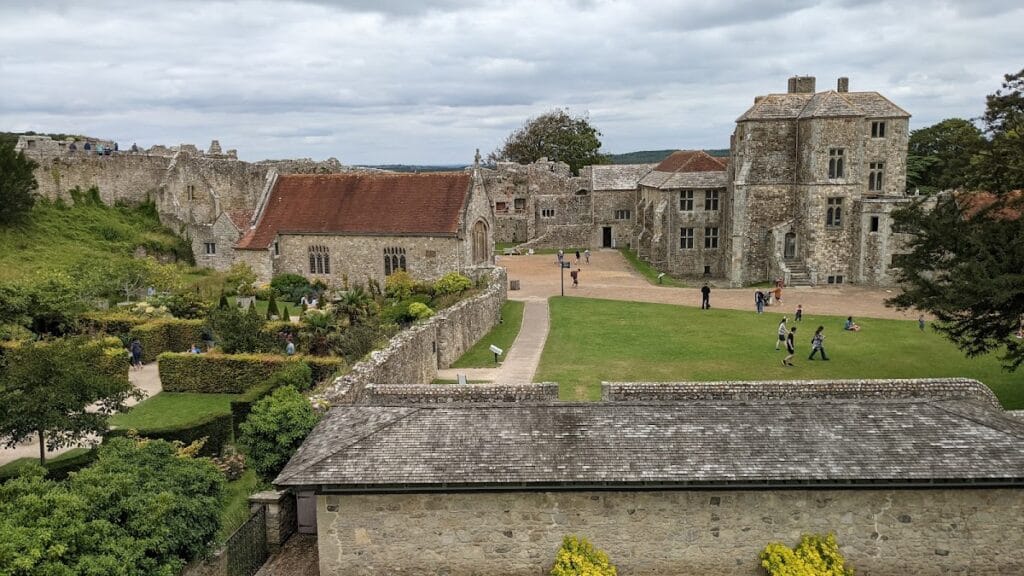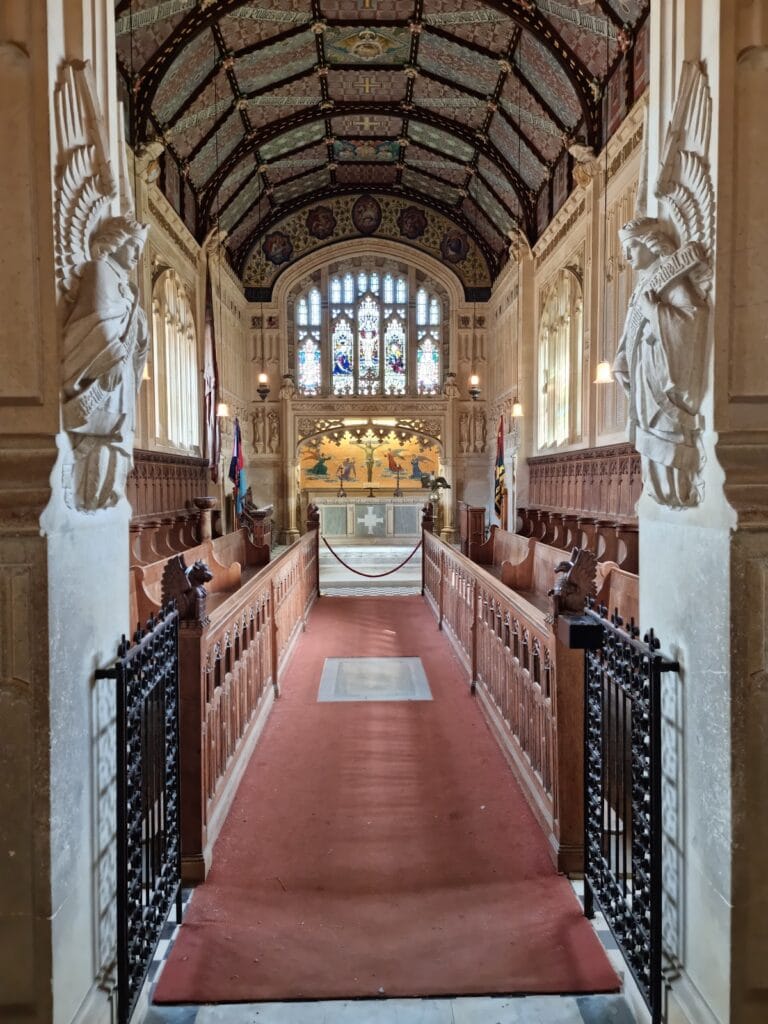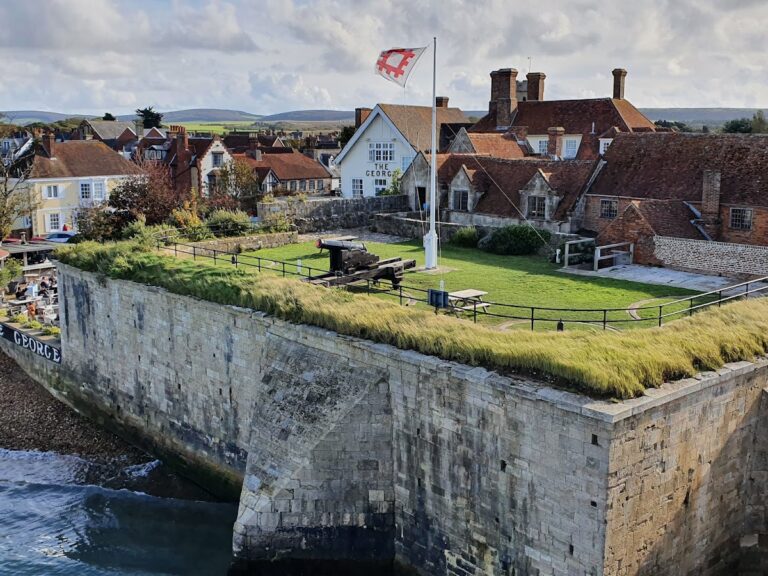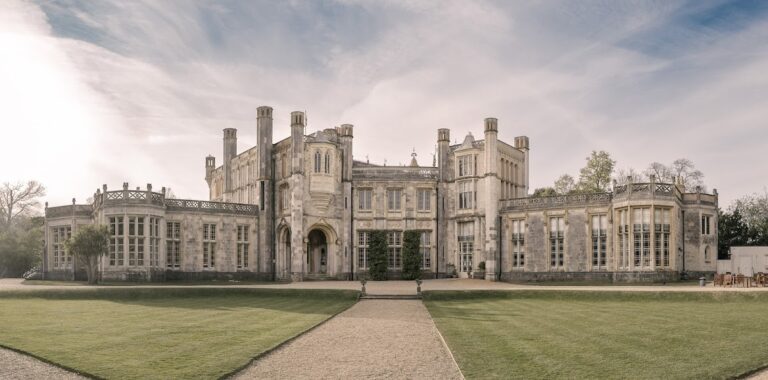Carisbrooke Castle: A Historic Fortress on the Isle of Wight
Visitor Information
Google Rating: 4.6
Popularity: Medium
Google Maps: View on Google Maps
Official Website: www.english-heritage.org.uk
Country: United Kingdom
Civilization: Medieval European
Remains: Military
History
Carisbrooke Castle is located on the Isle of Wight near the town of Newport, England. Its origins trace back to ancient times, with the site initially fortified by local inhabitants to defend against Viking attacks around the year 1000 AD. Archaeological evidence indicates earlier activity, including a Roman presence and an Anglo-Saxon settlement from the 6th to 8th centuries.
From approximately 1100, Carisbrooke came under the control of Richard de Redvers and his descendants. During their stewardship, the castle was significantly developed with stone curtain walls, towers, and a central keep, marking a transition from earlier wooden defenses. The last of this line, Countess Isabella de Fortibus, sold the castle to King Edward I in 1293, after which it came under royal administration, managed by appointed wardens.
In 1377, during the reign of Richard II, Carisbrooke withstood a French assault. Local legend highlights the role of Peter de Heyno, a skilled archer whose actions were believed to have saved the fortress. Later, in 1467, Anthony Woodville, Lord Scales, contributed to the castle’s defenses by adding the Woodville Gate. After his death in 1483, his brother Edward Woodville took control of Carisbrooke under the rule of Henry VII.
The castle underwent major strengthening during the late 16th century as England faced the threat of the Spanish Armada. Sir George Carey, named governor in 1583, commissioned the Italian engineer Federigo Giambelli to construct a modern style of fortification known as the trace Italienne. This design incorporated bastions and a surrounding ditch, enhancing the castle’s defenses. The work was completed by the year 1600 and cost roughly £4,000.
In the 17th century, Carisbrooke played a notable role during the English Civil War. King Charles I was held prisoner there for over a year before his execution in 1649. Two of his children were also confined at the castle, with his daughter Princess Elizabeth dying on the premises. Much later, from 1896 until 1944, Princess Beatrice, Queen Victoria’s daughter, lived at Carisbrooke as the governor of the Isle of Wight. Today, the historic site includes a museum celebrating both its long history and the castle’s ties to Charles I.
Remains
Carisbrooke Castle occupies a strategic position on a hill overlooking the adjacent village. It is built as a motte-and-bailey fortress, featuring a large artificial mound (the motte) topped by a hollow stone keep. This keep dates from the time of Baldwin de Redvers and was designed with supporting buttresses to counteract the unstable limestone beneath. Originally, a deep well, approximately 48 meters, provided water but ran dry in 1136. To solve this, a 49-meter deep well-house was constructed that employed a donkey-powered water wheel, a mechanism still demonstrated today.
The main entrance is marked by a gatehouse flanked by two round stone towers built between 1335 and 1336. These towers were elevated around 1380 and include narrow vertical slits used for archers. Above the gate features carved heraldic arms of Anthony Woodville, a notable figure who added the gate in the 15th century. Though partly in ruins, this gatehouse once housed the Isle of Wight Museum until the mid-20th century.
Within the bailey, a cluster of domestic buildings mostly date to the 13th century, with upper sections added in the 16th century. Several of these structures are ruined, but the main residential quarters remained intact and functional up to the 1940s. Among the notable interiors are the Great Hall and Great Chamber, which carry the legacy of Countess Isabella de Fortibus. The hall features a large fireplace installed in the late 14th century by William Montagu. Nearby, the Constable’s Lodging contains the prison bedroom where Charles I was held and also served as Princess Beatrice’s dining room; some of their possessions, such as Charles’s bed and her collection of stag and antelope heads, are preserved there.
The castle chapel, dedicated to St Nicholas, stands close to the main gate. It was rebuilt in 1904 under architect Percy Stone as a memorial to Charles I. This chapel also commemorates local soldiers who fought in the First World War, including Princess Beatrice’s son, and contains a deep well around 61 meters in depth.
Surrounding the core of the castle are extensive defensive earthworks and stone fortifications laid out in the trace Italienne style. This late 16th-century design introduced bastions, ramparts, and ditches arranged to provide multi-angled defense against attackers, reflecting the innovations commissioned by Sir George Carey and built by Federigo Giambelli. The outer gate still bears the date 1598 along with Queen Elizabeth I’s royal arms.
To the east of the motte stand two fourteenth-century stone houses now adapted as a tearoom. A nearby bowling green occupies an area that previously formed part of the defensive earthworks. Throughout the castle grounds, donkeys are kept to operate the traditional water wheel in the well-house, maintaining the historical method of raising water within the keep.










